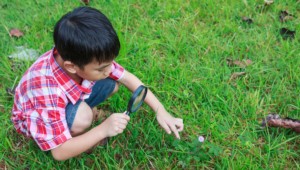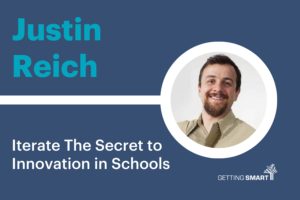The Secrets to Great Teaching

By Matt Bertasso. This post was originally published by New Tech Network.
What if we could learn the secret to great teaching? I am talking about the act of teaching. Great teachers connect with their students, care about them as individuals, and make their content come alive. Sometimes, a great teacher doesn’t teach great. So, back to my original question, “What if we could learn the secret to great teaching?”
Let’s first familiarize, or re-familiarize, two basic and fundamental principles of teaching, pedagogy for you fancy types.
Give a man a fish, feed him for a day. Teach a man to fish, feed him for a lifetime. In the mind of teachers, they’re feeding students for a lifetime. That’s their job, teach children to “fish.” The big question is, “Are we teaching fishing or are we giving fish?”
Bloom’s Taxonomy – simply put, Bloom’s is how we learn. It is broken down into six categories that define two levels of learning. Lower Order Thinking consists of remember, understand and apply. Higher Order Thinking requires analysis, evaluation and creation.
With these two things in mind, we are now ready to learn the secrets of great teaching.
Thanks to standardized testing and the need to grade papers quickly, low-level questions reign supreme in the classroom. Look at this unit plan:
Monday – Teach water cycle, students do worksheet
Tuesday – Continue water cycle, students do another worksheet
Wednesday – Quiz – grade with answer key to check for understand
Thursday – run experiments (demonstrations) on condensation and evaporation
Friday – roll out group poster project
Sound familiar? I hope not, but I am pretty sure we have either experienced this from the student’s point of view and quite possibly the teacher’s.
The problem here is the teacher gave all the information and the students never got out of the lower order thinking. Apply this scenario to an English class and the novel they are reading. A math class and the equation-of-the-week. A history class and the battle of this or that. Ultimately, we are getting low-level thinking because we are providing low-level activities, to fulfill the low-level accountability expectations.
How do we get out of this cycle? We start at the top, and by the top I mean the top of Bloom’s, in the higher order thinking. Now, I know some of us are saying, “No, I can’t start with higher order thinking, the students don’t have enough foundational knowledge to start at the top.” Hear me out. The top is where we engage the mind. (It is the “why” of learning, see Simon Sinek, The Golden Circle.) Then we scaffold the learning from the bottom. The great thing about Bloom’s is that in order to answer a higher order thinking question, we have to acquire lower order thinking knowledge. Back to our classroom.
We start with a high order question. For example, “What can be done to make it rain?” Then the teacher throws out a scenario. “All over the world there are places that are in droughts. What if we could figure out a way to make it rain?” Now the students and teacher dive into a similar process that design teams use. Through the process, students will learn the water cycle and they will show lower order thinking up to higher order thinking by the solution they come up to the original question, “What can be done to make it rain?”
Where does the whole fish thing come into play? In our first classroom, the teacher gave the students fish. The entire learning process was planned, implemented and coordinated by the teacher. At no point in time did the students actually engage in their own learning. In our second scenario, the learning started with a question, a question that begs to be answered, and the students took it from there. Students, in this case, are not only learning about the water cycle but they are learning about learning (critically thinking, problem-solving, creativity), a much more universal skill.
How do we take the classroom from giving fish to fishing? A traditional classroom is very teacher-centered. If we start to move along a pathway of innovation we see new practices – inquiry-based, project-based, blended learning, experiential – turn the focus from the teacher to the student. As student become more fluent in the learning process and design thinking, they are then able to take greater control of their own learning in a student-driven environment. When students have ownership over their learning, they aren’t learning for the teacher, the grade, or for their parents–they are learning for themselves, and deeper learning happens. Students, at this point, are truly fishing.
Teachers are trained to be givers. They give their time, their love and passion. In that training, teachers learn to give their content as well. However, this, right now in education in the 21st century, has to be a moment where we give up the giving. We need to allow students to seek out what they want and need. Start today by looking at your next piece of content. What is a question you could ask in those high order thinking sections of Bloom’s? Ask this question to your students and then, let go, allow them to struggle with it. Let that struggle drive them to research and ask more questions. Be there to support that search for answers, but let them go after it. After all, this is THEIR education.
For more, see:
- Would You Rather Be Traditional or Prepare Students for the Future?
- 3 Quick Tips and 40+ Resources for Globalizing your Learner Experiences
- Creating a Mindful Classroom Environment
Matt Bertasso is the Director of Compass Academy. Connect with him on Twitter: @mcbertasso.
Stay in-the-know with all things EdTech and innovations in learning by signing up to receive the weekly Smart Update.




Patti Shade
This article talks about the things we care about at Curiosita - setting ideas free, setting students free, setting teachers free, and setting schools free. #creativity #schools #freedomtothink @mcbertasso @Getting_Smart